The electric vehicle market continues to expand, with manufacturers vying to capture the attention of eco-conscious consumers. This time, we pit two notable contenders against each other: the Volvo EX30 and the VW ID.3. Both vehicles represent the future of automotive engineering, but they cater to different segments of the EV market. Let’s delve into a comprehensive comparison of these two exciting models.
Volvo EX30 vs VW ID.3 – Which one offers the better deal?
Everyday use, family trips or long-distance drives – here’s where the differences show.
Discover whether Volvo EX30 or VW ID.3 fits your lifestyle better.
Exterior Design and Dimensions
The Volvo EX30 stands as a compact SUV designed to blend ruggedness with sophistication. Measuring 4233 mm in length, 1837 mm in width, and 1549 mm in height, the EX30 offers a bold stance along with the practicality of an SUV.
In contrast, the VW ID.3 takes on a hatchback profile that emphasizes aerodynamics and efficiency. At 4264 mm long, 1809 mm wide, and 1564 mm high, it delivers a sleeker appearance but maintains comfort for five passengers, much like its rival.
Powertrain and Performance
Under the hood, the Volvo EX30 offers impressive performance with a choice of two electric powertrains: a 272 HP rear-wheel drive variant and a robust 428 HP all-wheel drive version. The EX30 boasts a remarkable acceleration feature, with the all-wheel drive variant achieving 0-100 km/h in as little as 3.6 seconds.
The VW ID.3, on the other hand, offers multiple configurations ranging from 170 HP to a high-performance 326 HP variant. Its performance is no slouch, with the top configurations achieving 0-100 km/h in 5.7 seconds. Both vehicles utilize a reduction gearbox, ensuring smooth and efficient power delivery.
Battery and Electric Range
When it comes to battery capacity, the EX30 provides options of 49 kWh and 65 kWh, promoting an electric range of up to 476 km. In terms of efficiency, it consumes approximately 17 to 17.5 kWh per 100 km, making it a viable option for longer trips.
The ID.3 shines with a broader range of battery capacities, from 52 kWh to 79 kWh, and an impressive electric range of up to 604 km. Its efficiency is highlighted by a consumption rating as low as 14.5 kWh per 100 km, allowing drivers to travel further on a single charge.
Interior and Technology
The interior of the Volvo EX30 is characterized by a clean and modern design, featuring high-quality materials and ample trunk space of 318 L. It accommodates up to five passengers comfortably and includes advanced infotainment systems with intuitive controls.
Meanwhile, the VW ID.3 offers slightly more trunk space at 385 L. The vehicle integrates a cutting-edge technology suite that includes a digital cockpit and voice recognition, allowing for easy access to navigation, music, and vehicle settings. Both vehicles focus on creating a user-friendly experience.
Driving Dynamics
The EX30 features a rear-wheel drive layout as standard, with the option for all-wheel drive, providing dynamic handling and stability on various terrains. Its agility makes urban driving enjoyable while maintaining composure on the highways.
The ID.3, being rear-wheel drive only, also delivers an engaging driving experience. Its lower center of gravity and precise steering contribute to nimble handling, making it ideal for city commutes and spirited drives alike.
Conclusion: Which One Reigns Supreme?
Both the Volvo EX30 and VW ID.3 represent significant advancements in electric vehicle technology. The EX30 excels with its SUV versatility, performance options, and robust range, making it a suitable choice for those seeking a sporty yet practical EV. Conversely, the ID.3’s hatchback design emphasizes efficiency, advanced tech, and a longer range, appealing to those prioritizing urban mobility.
Ultimately, the choice between these two formidable electric vehicles depends on individual needs and preferences. Whether you choose the rugged yet refined EX30 or the sporty and efficient ID.3, rest assured that both vehicles contribute to a cleaner, more sustainable future on the roads.
Here’s where it gets real: The technical differences in detail
Costs and Efficiency:
Price and efficiency are often the first things buyers look at. Here it becomes clear which model has the long-term edge – whether at the pump, the plug, or in purchase price.
VW ID.3 has a slightly advantage in terms of price – it starts at 28600 £, while the Volvo EX30 costs 33000 £. That’s a price difference of around 4423 £.
In terms of energy consumption, the advantage goes to the VW ID.3: with 14.50 kWh per 100 km, it’s a bit more efficient than the Volvo EX30 with 17 kWh. That’s a difference of about 2.50 kWh.
As for range, the VW ID.3 performs noticeable better – achieving up to 605 km, about 129 km more than the Volvo EX30.
Engine and Performance:
Under the bonnet, it becomes clear which model is tuned for sportiness and which one takes the lead when you hit the accelerator.
When it comes to engine power, the Volvo EX30 has a distinct edge – offering 428 HP compared to 326 HP. That’s roughly 102 HP more horsepower.
In acceleration from 0 to 100 km/h, the Volvo EX30 is clearly quicker – completing the sprint in 3.60 s, while the VW ID.3 takes 5.70 s. That’s about 2.10 s faster.
In terms of top speed, the VW ID.3 performs minimal better – reaching 200 km/h, while the Volvo EX30 tops out at 180 km/h. The difference is around 20 km/h.
There’s also a difference in torque: VW ID.3 pulls hardly perceptible stronger with 545 Nm compared to 543 Nm. That’s about 2 Nm difference.
Space and Everyday Use:
Cabin size, boot volume and payload all play a role in everyday practicality. Here, comfort and flexibility make the difference.
Both vehicles offer seating for 5 people.
In curb weight, VW ID.3 is slight lighter – 1787 kg compared to 1840 kg. The difference is around 53 kg.
In terms of boot space, the VW ID.3 offers slightly more room – 385 L compared to 318 L. That’s a difference of about 67 L.
In maximum load capacity, the VW ID.3 performs noticeable better – up to 1267 L, which is about 267 L more than the Volvo EX30.
When it comes to payload, VW ID.3 somewhat takes the win – 473 kg compared to 390 kg. That’s a difference of about 83 kg.
Who wins the race?
The VW ID.3 proves to be slightly ahead and therefore becomes our DriveDuel Champion!
VW ID.3 is the better all-rounder in this comparison.
 @ Volkswagen AG / VW Media
@ Volkswagen AG / VW Media
VW ID.3
Volvo EX30
The Volvo EX30 represents a bold step forward for the brand, combining advanced technology with sustainable design principles. Its sleek and compact exterior belies a spacious interior that offers a premium driving experience. With a focus on safety and innovation, this model reflects Volvo's commitment to shaping the future of urban mobility.
details @ Volvo Cars
@ Volvo Cars
 @ Volvo Cars
@ Volvo Cars
 @ Volvo Cars
@ Volvo Cars
 @ Volvo Cars
@ Volvo Cars
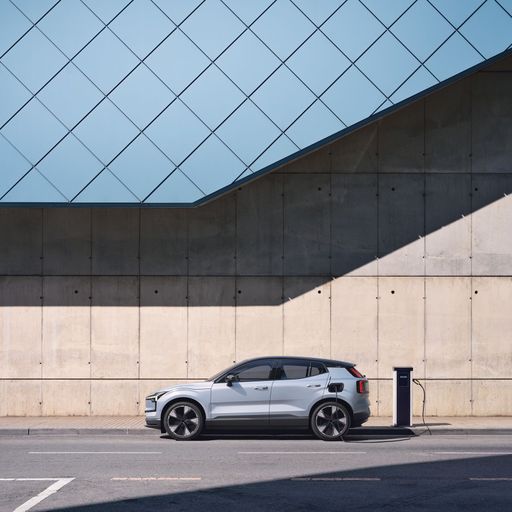 @ Volvo Cars
@ Volvo Cars
VW ID.3
The VW ID.3 represents Volkswagen's entry into the world of electric vehicles, offering a modern design that combines functionality with sustainability. Inside, you'll find a spacious and tech-forward interior, providing a comfortable driving experience while maintaining a focus on environmentally friendly materials. The ID.3's performance delivers a smooth and responsive feel on the road, making it a strong contender in the growing electric car market.
details @ Volkswagen AG / VW Media
@ Volkswagen AG / VW Media
 @ Volkswagen AG / VW Media
@ Volkswagen AG / VW Media
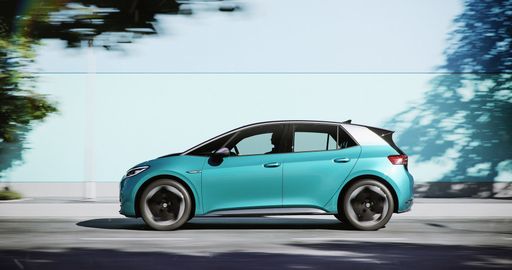 @ Volkswagen AG / VW Media
@ Volkswagen AG / VW Media
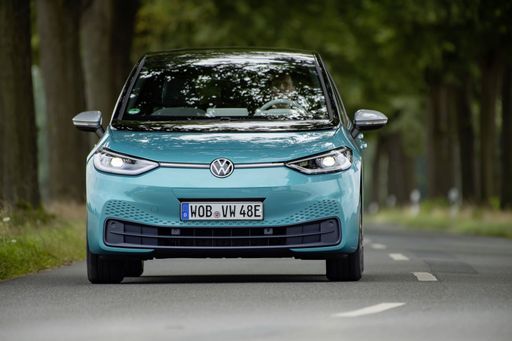 @ Volkswagen AG / VW Media
@ Volkswagen AG / VW Media
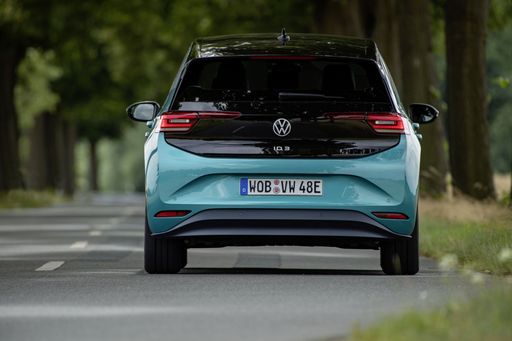 @ Volkswagen AG / VW Media
@ Volkswagen AG / VW Media
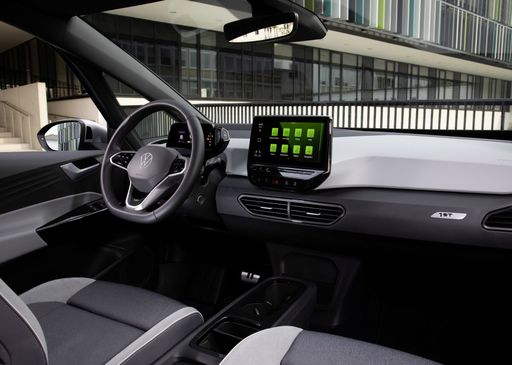 @ Volkswagen AG / VW Media
@ Volkswagen AG / VW Media
 @ Volkswagen AG / VW Media
@ Volkswagen AG / VW Media
 @ Volvo Cars
@ Volvo Cars
|
 @ Volkswagen AG / VW Media
@ Volkswagen AG / VW Media
|
|
|
|
Costs and Consumption |
|
|---|---|
|
Price
33000 - 49100 £
|
Price
28600 - 49300 £
|
|
Consumption L/100km
-
|
Consumption L/100km
-
|
|
Consumption kWh/100km
17 - 18.7 kWh
|
Consumption kWh/100km
14.5 - 15.8 kWh
|
|
Electric Range
339 - 476 km
|
Electric Range
383 - 605 km
|
|
Battery Capacity
49 - 65 kWh
|
Battery Capacity
52 - 79 kWh
|
|
co2
0 g/km
|
co2
0 g/km
|
|
Fuel tank capacity
-
|
Fuel tank capacity
-
|
Dimensions and Body |
|
|---|---|
|
Body Type
SUV
|
Body Type
Hatchback
|
|
Seats
5
|
Seats
5
|
|
Doors
5
|
Doors
5
|
|
Curb weight
1840 - 1960 kg
|
Curb weight
1787 - 1993 kg
|
|
Trunk capacity
318 L
|
Trunk capacity
385 L
|
|
Length
4233 mm
|
Length
4264 mm
|
|
Width
1838 mm
|
Width
1809 mm
|
|
Height
1550 - 1567 mm
|
Height
1564 mm
|
|
Max trunk capacity
1000 L
|
Max trunk capacity
1267 L
|
|
Payload
370 - 390 kg
|
Payload
437 - 473 kg
|
Engine and Performance |
|
|---|---|
|
Engine Type
Electric
|
Engine Type
Electric
|
|
Transmission
Automatic
|
Transmission
Automatic
|
|
Transmission Detail
Reduction Gearbox
|
Transmission Detail
Reduction Gearbox
|
|
Drive Type
Rear-Wheel Drive, All-Wheel Drive
|
Drive Type
Rear-Wheel Drive
|
|
Power HP
272 - 428 HP
|
Power HP
170 - 326 HP
|
|
Acceleration 0-100km/h
3.6 - 5.7 s
|
Acceleration 0-100km/h
5.7 - 8.2 s
|
|
Max Speed
180 km/h
|
Max Speed
160 - 200 km/h
|
|
Torque
343 - 543 Nm
|
Torque
310 - 545 Nm
|
|
Number of Cylinders
-
|
Number of Cylinders
-
|
|
Power kW
200 - 315 kW
|
Power kW
125 - 240 kW
|
|
Engine capacity
-
|
Engine capacity
-
|
General |
|
|---|---|
|
Model Year
2024 - 2025
|
Model Year
2024 - 2025
|
|
CO2 Efficiency Class
A
|
CO2 Efficiency Class
A
|
|
Brand
Volvo
|
Brand
VW
|
What drivetrain options does the Volvo EX30 have?
The Volvo EX30 is offered with Rear-Wheel Drive or All-Wheel Drive.
The prices and data displayed are estimates based on German list prices and may vary by country. This information is not legally binding.
